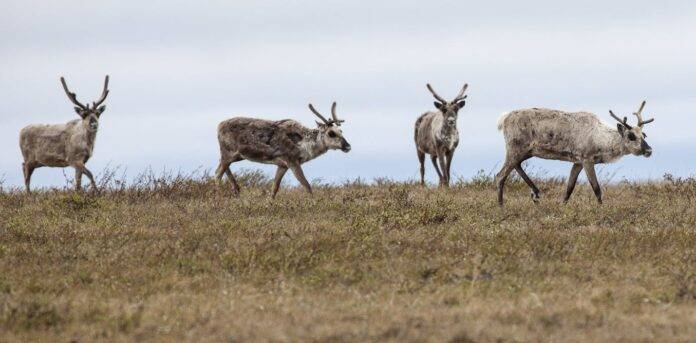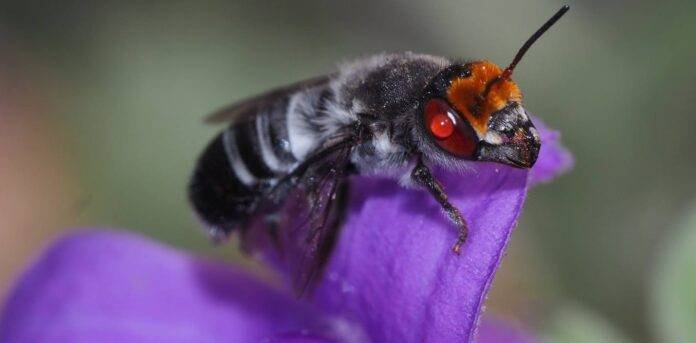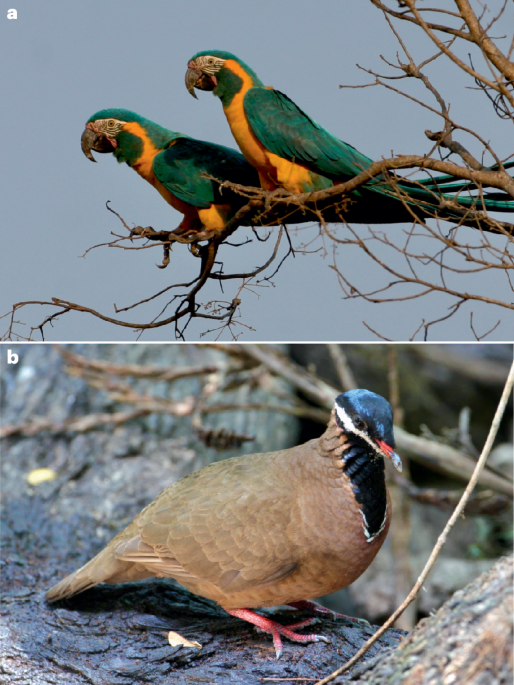eDNA technology enriches historical monitoring data
eDNA technology can facilitate effective large-scale surveillance, while providing a more accurate reflection of the composition of fish species at sampling sites36. In this study, eDNA technology was used to monitor the fish composition of the Duliu River, and 98 fish species were detected, including 69 species in the dry season and 82 species in the wet season. The results showed that there were 53 species in the two, accounting for 54%. Because of the construction of the dam, the hydrological characteristics have changed, and the results of this study have reduced the number of fish that prefer to live in a flowing water environment and habitually inhabit the bottom compared to historical data, most of which are Cobitidae and Cyprinidae. In addition, a number of exotic fish species have also appeared in the monitoring of eDNA technology, and the current survey results have increased by a total of five orders of magnitude compared with historical data. namely Acipenseriformes, Cyprinodontiformes, Beloniformes, Clupeiformes and Salmoniformes. Furthermore, certain fish species exhibit a preference for still water and slow currents, while others are typically found in the upper layers of the water. This observation aligns with the ecological changes in aquatic ecosystems resulting from dam construction.
Seasonal variation in the structure of fish communities
There are temporal differences in the structure of fish communities in the Duliu River Basin, which are mainly divided into differences between the dry and wet seasons. The water flow was low during the dry season, and some sections of the river became still water after the dam was constructed. During the wet season, the water flow is high and the tributaries are interconnected37. We compared the differences in fish community structure and α diversity between the dry and wet seasons in the Duliu River Basin in Guizhou. From the perspective of differences in species composition, comparing the abundance proportions of each order in the dry and wet seasons, the proportion of Cypriniformes accounted for 94%, Perciformes accounted for 3%, and Siluriformes accounted for 3% in the dry season. In the wet season, Cypriniformes, Perciformes, and Siluriformes accounted for 82%, 11%, and 5%, respectively. ANOVA seasonal analysis of the OTUs and reads measured in the Duliu River revealed a significant difference in the number of reads between the wet and dry seasons (P < 0.05). However, no significant difference was observed in the number of OTU sequences between the species in question (P < 0.05). The results demonstrated that there were no notable differences in the diversity of the fish species. However, there were discernible variations in the abundance of each species, which are indicative of biological diversity.
The fish composition of the Duliu River has the characteristics of typical inland water bodies, particularly reservoir fish composition. (1) Cypriniformes was the main species, and the number of cypriniformes accounted for 72.45% of the 71 fish species collected in the reservoir, which was basically the same as the proportion of cypriniformes surveyed by Dai Yinggui, and 9 species of 5 orders, 5 families, and 9 species have been added19. (2) During the dry season, deep-water fish were the dominant species, and limited water flow resulted in an increased abundance of fish that preferred still water. Among these, Gambusia affinis is particularly prevalent, exhibiting a tendency to swim in clusters on the surface of the water and displaying characteristics of a warm and temperate small fish38. It inhabits a variety of aquatic habitats, including reservoirs, lakes, dams and depressions39. Cirrhinus mrigala, which prefers still water, has a fast growth rate, usually lives in the middle and lower layers of water bodies, can live in reservoirs, lakes, rivers, and other water bodies, and has a strong ability to tolerate hypoxia and diseases40. It is not tolerant to low temperatures because the construction of the dam weakens the seasonal variation in the water environment, resulting in a small difference in water temperature in different seasons, which is conducive to the growth of Cirrhinus mrigala and is detected more downstream of the dam10,41. Ictalurus punctatus is active at the deep bottom42, is adaptable and easy to reproduce, and is an economically important fish that can be cultivated intensively in rivers, lakes, and pools43. Most of these fish species are found in the still water bottom, and the adaptability of fish to changes in the aquatic environment is closely related to the composition of fish ecological types44. (3) The dominant flow-type fish during the wet season, owing to the large water flow during this season, are the interconnected fish of each tributary, Zacco platypus, a rapid-flow fish in mountain streams45. It is predominantly found in sandy and gravel shoals with strong currents on river tributaries46. In recent years, the germplasm resources of wild Zacco platypus have decreased owing to overfishing and the construction of water projects47. Hemibarbus labeo often inhabits the middle and lower layers of the upper reaches of rivers where there is flow48. It prefers low temperatures and clear water basins and has less activity in lakes and reservoirs49and more activity in the tributaries of the Duliu River during the wet season. Botia pulchra is a small demersal fish that prefers to live in flowing water with sandy substrate50. During the wet season, most of the water-loving fish were detected, and the creek was a natural channel without the impact of dam construction. Its upstream habitats are diverse, and the diversity of benthic fauna is high; therefore, the biological density is also high51.
In addition, the α diversity index reflects species diversity in the region at different times. The results showed that the α diversity index of fish community diversity in the wet season was higher than that in the dry season, and the species diversity in the wet season was also higher than that in the dry season, which is similar to the results of a study in the Shishou section of the Yangtze River52.
spatial heterogeneity of the mountain river
The construction of dams, which affects approximately 63% of the world’s rivers, is one of the major factors contributing to the decline in global freshwater fish diversity53. The construction of the Duliu Water Conservancy Project led to a large spatial difference in the structure of fish communities. In this study, we focused on comparing different hydrological cross-sections in the Duliu River Basin in Guizhou, and through the histogram of species composition and PCoA analysis, the fish community structure in the basin was divided into 3 groups according to hydrological characteristics.
(1) In the deep-water and slow-flowing areas (DF), the construction of the dam resulted in synchronous changes to the fish composition structure of the Duliu River due to the hydrological alterations caused by the cascade project. These alterations also led to an overall uplift of the river water level and flow relationship during the dry season54. This section of the river detected more Rhodeus ocellatus, a small freshwater native ornamental fish that is distributed in all major water systems in China55. Rhodeus ocellatus is adapted to low-altitude slow-flowing or stationary waters, and is more often found in still waters with low transparency and slightly higher eutrophication, and often moves in groups43. (2) In the shallow water and slow-flowing areas (SF), which is the transitional section between the reservoir area and the tributaries, the natural hydrological situation of the downstream river channel subsequently affects the habitat environment of aquatic organisms in the river56. The dominance of fish species changes owing to increased water velocity and changes in habitat conditions57. it was detected that Discogobio yunnanensis, which preferred to live in the upper reaches of rivers and mountain streams, and was mostly distributed in the Jinsha River, Nanpan River and Yuanjiang River systems58. The results showed that it also occurred in the Duliu River Basin. It mostly inhabits the flowing water at the bottom of the gravel and is a small economic fish with small individuals and high fat content59. However, owing to the construction of cascade power stations, overfishing, water environment pollution, and other reasons, wild Yunnan panfish resources have become increasingly scarce60. (3) In the shallow water and rapids area (SR), the river section in question is relatively shallow, and there are more water-loving fish. As the river flow increases, the distribution of suitable habitats for certain fish species expands from the middle of the river to both sides61. A special Onychostoma lini was detected, which is similar to flowing waters and is mainly distributed in the Qingshui River, which belongs to the Yuanjiang River system, and the Duliu River, which belongs to the Pearl River system31. Over time, its population has been declining, germplasm resources are on the verge of disappearing62. In recent years, Onychostoma lini has basically disappeared from the Qingshui River in Guizhou, and only appears in the rj section of the sampling point in the Duliu River, which has become an almost isolated population because of the construction of dams at the downstream hydropower station, and the number is extremely rare32.
In the dry season, the species diversity in SR waters was high, while the species diversity in DF waters was the lowest in the Observed_species, Chao1, and Pielou_J indices. The SF waters were similar to the SR waters, the water flow of these 8 sampling points was faster, and the dominant species was Barbodes sinensis, which led to differences in fish community structure due to differences in environmental factors such as pH and dissolved oxygen between the sampling points63,64. The species composition of DF waters was quite different from that of other sampling sites, and the fish community structure of pjw was located near the reservoir site, which was more suitable for fish adapted to slow-flowing still water and relatively high-water temperatures65. The blc sampling site has a large amount of water, is located near the shipping hub, and has slow water flow; therefore, its community composition is similar to that of the pjw sampling site. In the wet season, the 3 groups of cross-sectional layers divided by hydrological characteristics in the Duliu River basin had less influence on fish community structure than in the dry season, and the Siniperca scherzeri OUT at the two sampling points xjz and cj was 10 times higher than that of the other sampling points, suggesting that there may be Siniperca scherzeri in these two waters, or that there are other human factors affecting the abundance of Siniperca scherzeri DNA in the basin66. Due to the real-time nature of eDNA technology and the limitations of sampling, it may be that the DNA distribution at these two sites is uneven, and Siniperca scherzeri is more active, resulting in an increase in the number of OTUs collected67.
The impact of dam construction on mountain rivers
Mountain rivers are often regarded as relatively pristine ecosystems characterized by steep gradients, high hydraulic roughness of banks, high turbulence, high spatial and temporal variability of river flows, and high connectivity of landscapes, hydrology, and sediments68. The construction of dams is an effective method for intercepting sediment and retaining soil and water in mountain river catchments because of the natural characteristics of these environments and the hydro-geomorphological conditions that occur in their channels. Furthermore, the construction of dams affects the structure of fish communities in a number of ways25, and the effects of dams on fish (including aquatic mammals) include blocking migration routes, habitat fragmentation, changing from lotic to lentic water in the impounded area, release of hypolimnetic cold water from the reservoir, and changes in water flow in downstream reaches69. The construction of dams in the Duliu River Basin has led to changes in the living space of fish, spatial heterogeneity in river ecosystems, and changes in fish community structure7. Near the dam, owing to increased water storage and blocked dikes, the flow slows down and fish abundance increases, which decreases as the reservoir ages70. Some fish species adapted to flowing water and gravelly sand environments decreased or disappeared in this area, while the abundance of fish adapted to deep and slow water increased, resulting in changes in the composition of reservoir fish communities71.
Reservoirs are used in human supply, irrigation, and power generation. Although dams are important for economic development, they contribute to the severity and irreversibility of the natural hydrological regime of rivers and alter the quality of habitats and dynamics of the biota as a whole72. Changes in natural flow regimes after reservoir formation have far-reaching implications, including changes in the original hydrological dynamics, historical patterns of biological production, spatial and temporal distribution of biodiversity, and changes in the functions and services provided by aquatic ecosystems73. In the reservoir area, the main impact is the change from the terrestrial environment to the perspective environment, which greatly affects aquatic animals, including fish. These effects are associated with temporal and spatial variation74. However, because of changes in seasonal water flows, with the most affected species being rheophilic species and those that make long migrations and require different types of habitats to complete their life cycles75,76. In addition to paying attention to dam construction, more attention should be paid to the impact of cascading dams. The impact of cascading dams on aquatic ecosystems is more complex and severe than that of a single dam. However, only a few studies have focused on the effects of cascading dams69.
The construction of the dam resulted in alterations to the structural diversity of fish communities. This change was also evident in the introduction of non-native species, which exhibited significant differences in behavior and were phylogenetically distinct from native species. These findings align with the results of this study77. The study of the largest step dam in China also shows that the number of native fish in each section of the dam area has seriously decreased, while the number of invasive species has increased, and the ecological function of the river has changed11. Environmental protection strategies changed fish diversity and community structure, which led to the reduction of spatial heterogeneity of fish community structure and the stabilization of ecosystems8.
Due to the construction of the Duliu River Water Conservancy Project, the hydrological characteristics of the river, the circulation of the river, and the stratification of water temperature have changed, resulting in changes in the fish composition of the river. Therefore, based on the current situation of the Duliu River, we put forward the following protection suggestions: establish a nature reserve in situ; increase species diversity by identifying and establishing new spawning grounds and habitats along river banks or tributaries; Enforce fishing bans in accordance with fish management regulations and establish a database of species diversity.






